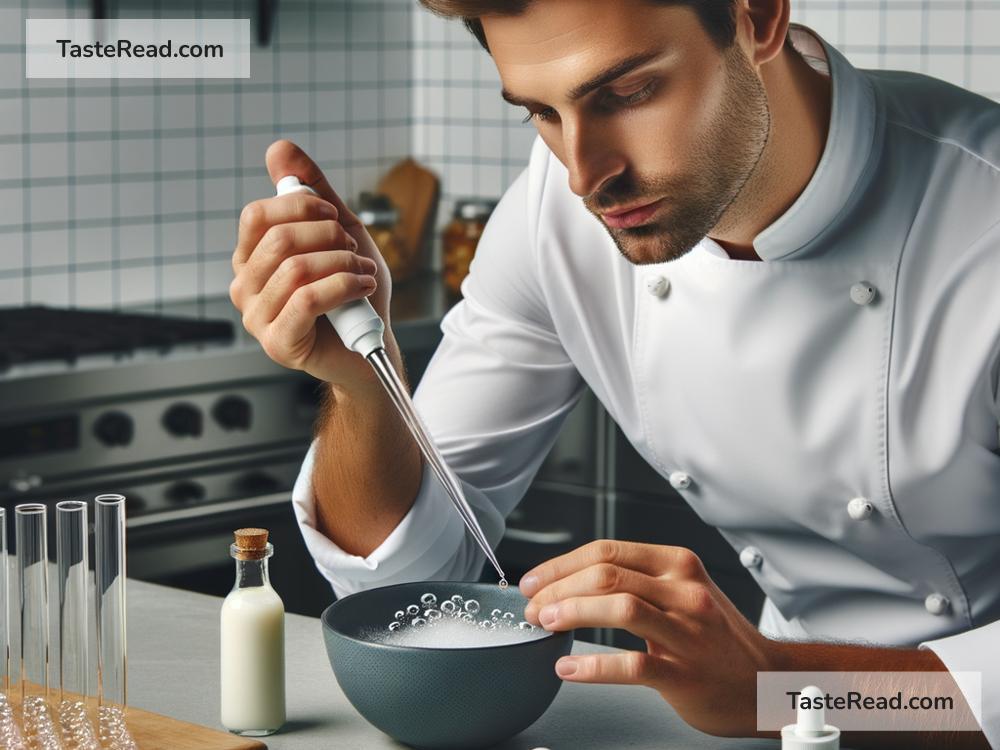Unleashing Flavors with Molecular Gastronomy: Simple Advanced Techniques for Every Kitchen
Molecular gastronomy is like the magic of cooking. It’s when you mix cooking with science to create dishes that surprise your eyes and dazzle your taste buds. But don’t let the fancy name scare you away! You don’t need to be a scientist or a professional chef to dive into this exciting world. Here, we’re exploring some advanced, yet simple techniques from the realm of molecular gastronomy that you can try in your own kitchen. Let’s break it down and make the complex simple.
1. Spherification – Creating Flavorful Pearls
Imagine serving a dish with little pearls that burst in your mouth, releasing a wave of taste. That’s spherification. It sounds complicated, but it’s really not. You need two main ingredients – sodium alginate and calcium lactate. Mix your flavorful liquid (like fruit juice) with sodium alginate, and then drop it into a bath of water mixed with calcium lactate. The reaction between these two creates a thin, jelly-like skin around the liquid, forming beautiful pearls. It’s like making tiny flavor bombs that can elevate any dish, from desserts to cocktails.
2. Foams and Airs – Light as a Feather
Ever wondered how chefs create those light, airy foams that sit atop dishes, adding both flavor and sophistication? With a few simple tools like a hand blender, a sieve, and some lecithin (a natural emulsifier), you can whip up your own. Blend your flavorful liquid (could be anything from fruit juice to a savory broth) with a bit of lecithin, then use a hand blender to incorporate air into it. The result? A light, airy foam that can make your dishes look and taste like they came straight from a fine dining restaurant.
3. Sous Vide – Precision Cooking
Sous vide is French for “under vacuum,” and it’s a technique that involves cooking food in a precisely controlled water bath. It might sound high-tech, but with affordable sous vide equipment available nowadays, it’s easy to try at home. You seal your food together with its marinade in a vacuum-sealed bag, then place it in a water bath set to a specific temperature. This method cooks the food evenly and retains its moisture, giving you results that are hard to achieve with traditional cooking methods. Meats come out perfectly tender, and vegetables retain their crispness and flavor.
4. Deconstruction – Breaking it Down
Deconstruction isn’t a cooking method, but rather a way of reimagining a dish. It involves taking a traditional recipe and breaking it down into its individual components, then presenting them in a new and creative way. For instance, imagine a deconstructed cheesecake with crumbled biscuit, a creamy cheesecake filling spread, and a dollop of fruit compote on the side. Each bite lets you experience the dish in a whole new way. This technique encourages creativity and will definitely wow your guests.
5. Liquid Nitrogen – The Cool Factor
Liquid nitrogen might seem like the stuff of science labs, but it’s also an incredible tool for creating stunning culinary effects. With a temperature of -196°C (-320°F), it can instantly freeze foods, creating fascinating textures. From flash-freezing a cocktail into a slushie to making ultra-smooth ice cream right before your eyes, the possibilities are endless. However, it’s crucial to use liquid nitrogen with care, respecting safety guidelines to avoid burns.
6. Agar Agar – Vegetarian Gelatin
Agar agar is a seaweed extract that acts much like gelatin but is completely vegetarian. It’s perfect for creating firm, clear jellies without the need for animal products. You can use agar agar to make everything from vegan gummy candies to aspics and more. The key is to dissolve the agar agar in a liquid, bring it to a boil, then let it set. You can mold it into any shape, offering a new dimension to your dishes.
Bringing It All Together
Molecular gastronomy might seem daunting, but with a little practice, these advanced techniques can be within the reach of home cooks too. Experimenting with these methods and ingredients can open up a whole new world of flavors and presentations. The important thing is to have fun and let your creativity run wild. Who knows? You might just create your next signature dish by merging science with the art of cooking. Remember, great cooking is not just about following recipes—it’s about experimenting and discovering new ways to make food exciting. Happy cooking!


